What is our primary use case?
The banking sector primarily uses Power Systems. It is run on their core banking environments due to its stability, reliability, and availability. When it comes to the telecom sector, telecom sectors have been utilizing Power Systems for middleware applications and CR.
How has it helped my organization?
There are many benefits. One Power Systems in a single rack is able to accommodate much more workloads by using physically less space and less power as compared to other platforms, like Intel. That is one benefit.
Another benefit is that you can perform maintenance and activities. You can conduct a lot of maintenance activities without any outages in your business.
When you're running Power Systems, it is owned and supported by IBM and AIX operating system is not an open-source operating system. It's an IBM proprietary system. It is built for IBM Power Systems specifically. It works exceptionally well because the hardware, and all the components, and the software, they're all built to work on IBM Power Systems.
What is most valuable?
Micro-Partitioning is where you can slice your physical code. If you have one code in a system, you can further slice it up to 20%. You can assign one virtual machine, which is called LPAR, 0.05 of a code. It allows you to more effectively use your available system resources. That includes your physical processes, your code, your memories, and allows you to dynamically increase them and decrease them whenever you need without any outage.
There are other features like Live Partition Mobility that allows you to move your workload from one physical Power Systems to another Power Systems, without an outage to the business.
Active Memory Sharing dynamically adjusted your memory based on the requirements of the logical partition.
Active Memory Expansion allows you to compress your memory on the run time to allow you to have less physical memory available, but provision more memory to your partitions, as everything will be compressed on the fly.
Reliability, availability, and serviceability of the IBM Policy Systems are unmatched. 99% of the maintenance activities can be performed online without having any outage for customers.
What needs improvement?
It does not offer the ability to run any X86 or X64 Intel architecture-based application on Power Systems. There are a lot of applications, lots of business use cases that do not support this architecture as of now. If somehow application tasks can be ported on to IBM Power Systems, that would be a big improvement.
Power Systems has dominance in terms of features, and the capability is much more powerful than the other competitors right now. Intel is the other primary platform. If you look at Intel x86 and compare it with Power Systems, all of the features are much more reliable, available and serviceable as compared to the Intel platform. The one thing that we lack is that a lot more applications are supported on the internet compared to Power Systems. That's one thing that we primarily lack.
For how long have I used the solution?
I've been working with Power Systems since 2010. I just left IBM a few months ago. I delivered solutions that contained IBM Power Systems and deployed them in customers' infrastructure at an enterprise level.
I've primarily worked with AIX 6.1, 7.1 and the last one that I deployed was AIX 7.2.
What do I think about the stability of the solution?
The stability of IBM Power Systems along with the AIX operating system is unmatched. Once you are up and running, you will rarely face any outage. You cannot compare it to any other platform.
Once you are up and running and do not make any changes to your configuration, you will not face many issues. Errors and VFDs outages have been rare as well. If you do not make changes and keep your environment stable, you will not have any outages.
What do I think about the scalability of the solution?
The processes are scalable. You can increase memory on the fly without any outages. With capacity on-demand you can purchase a Power Systems with selected physical cores, and memory activated. When you feel the need for that memory and you feel that you need excess capacity, then you can purchase the license for those, or you can get an hourly license and activate them as per your need and provide your business the extra power that it needs at that time.
For the maintenance, there are two types of components. One is the customer replaceable unit CRU and the FIU that IBM replaced. We have a call home feature that you can enable whenever there's a hardware failure or that sort of problem we'll call the particularly log with IBM, and then IBM supplies the part to the customer. If it is a customer replaceable unit, a single person will go to the data center and replace it.
How was the initial setup?
The difficulty of the initial setup depends. If you talk to someone coming from VMware or Hyper-V, they will find it a bit complex, but if you talk to someone from Linux, they will find it a bit different initially, but with time it becomes very simple and easy to understand.
IBM Power Systems has some tools, like power VC that is a private cloud on-prem. That allows you to do the whole deployment automatically via a very easy web-based user interface.
The time it takes to deploy depends on how many virtual machines you need to run, the overall complexity of the solution, and if migrations are involved. The initial deployment can take around five days which includes the initial physical installation in the data center. Then the physical integration with the network, the transfer switches, and the storage is the customer infrastructure. After that, we configure the virtualization. If we configure a single little part, it would usually take you around five days.
As far as the infrastructure is concerned, a single person can deploy it. If the person deploying only has experience with Power Systems and does not have storage skills, you will need someone from the storage team as well to do the deployment.
What was our ROI?
There are a lot of day-to-day administrative tasks. Problems that you face in a typical environment, you will not face on Power Systems. If you secure your environment, you can better focus on other productive tasks for your organization, other than spending time logging into your VMs and making changes after every little while and things like that. Your technical teams can offload a lot of the daily routine tasks.
Which other solutions did I evaluate?
You can compare Power Systems to Oracle Exadata. Oracle Exadata collects only for databases, but IBM Power Systems has a shared processor pool that we can allocate and using this shared processor, we can reduce the licensing cost for Oracle databases and achieve better performance when you combine it with IBM Flash System storage.
Solaris is unique. There are not any other platforms that I would compare to right now.
What other advice do I have?
It's nothing to be scared of it. It might be completely different than what you have been using, but IBM Power Systems is very stable and supports the systems that we have already been using. The Private Cloud IAS offering is included free for all enterprise customers.
It is easy to administrate and manage IBM Power Systems to make the process of moving from VMware or other environments easy.
When you get Power Systems, you get points and after the initial deployment that is performed by IBM, using those points, you can get five days or 10 days of service from IBM. Those services include Power Systems training. If you have enough points, you can get IBM to deliver training.
I would rate Power Systems an eight out of ten based on the new features that were launched recently. They made it available on the cloud. A customer getting a Power Systems in their environment on plan is very expensive. You can create a VM on the IBM or Google cloud, running on IBM Power Systems. Or you can get the PEP2 client code. There is a little hardware cost.
Which deployment model are you using for this solution?
On-premises
Disclosure: My company does not have a business relationship with this vendor other than being a customer.

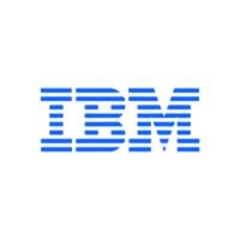

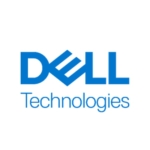
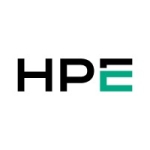
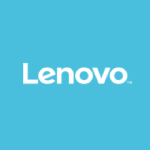
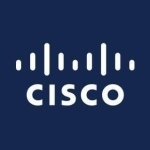
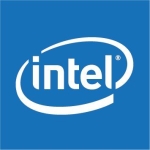
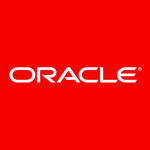
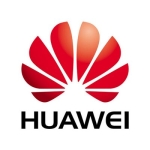

Very Informative it will make the decision easy to choose IBM Power servers... good job shan